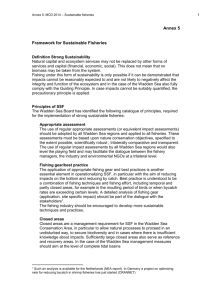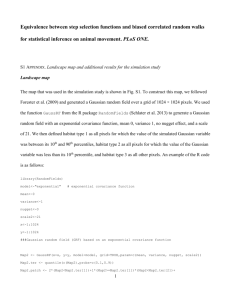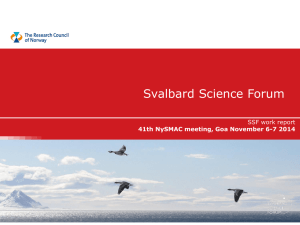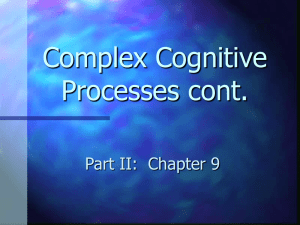Central Nervous System Case Scenarios
advertisement
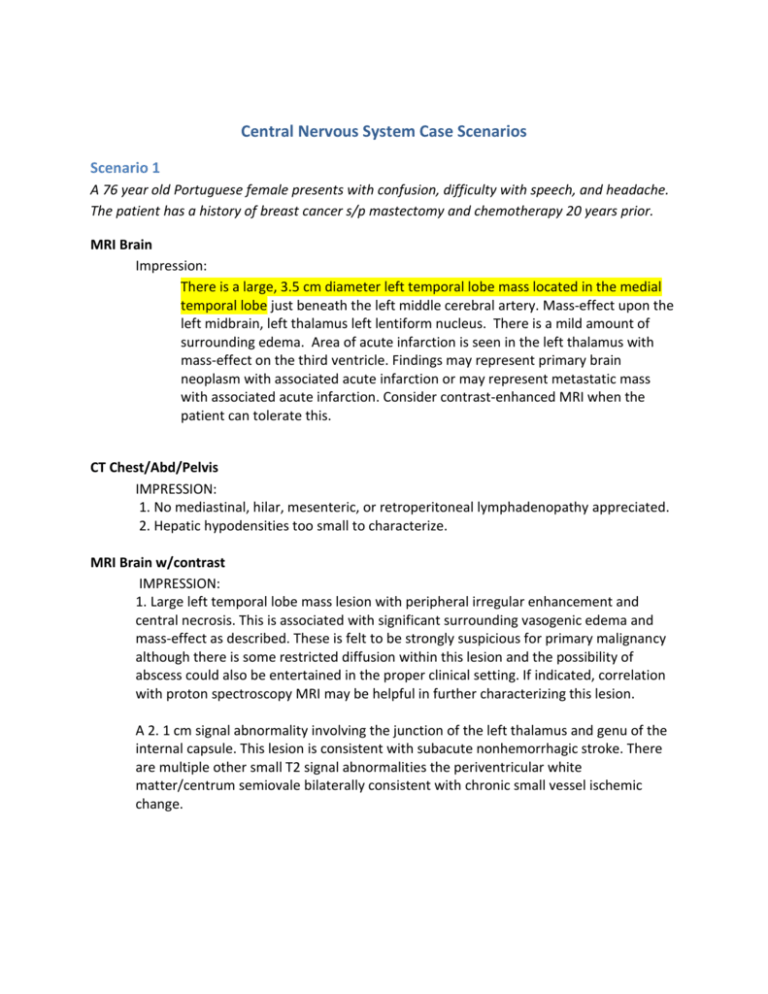
Central Nervous System Case Scenarios Scenario 1 A 76 year old Portuguese female presents with confusion, difficulty with speech, and headache. The patient has a history of breast cancer s/p mastectomy and chemotherapy 20 years prior. MRI Brain Impression: There is a large, 3.5 cm diameter left temporal lobe mass located in the medial temporal lobe just beneath the left middle cerebral artery. Mass-effect upon the left midbrain, left thalamus left lentiform nucleus. There is a mild amount of surrounding edema. Area of acute infarction is seen in the left thalamus with mass-effect on the third ventricle. Findings may represent primary brain neoplasm with associated acute infarction or may represent metastatic mass with associated acute infarction. Consider contrast-enhanced MRI when the patient can tolerate this. CT Chest/Abd/Pelvis IMPRESSION: 1. No mediastinal, hilar, mesenteric, or retroperitoneal lymphadenopathy appreciated. 2. Hepatic hypodensities too small to characterize. MRI Brain w/contrast IMPRESSION: 1. Large left temporal lobe mass lesion with peripheral irregular enhancement and central necrosis. This is associated with significant surrounding vasogenic edema and mass-effect as described. These is felt to be strongly suspicious for primary malignancy although there is some restricted diffusion within this lesion and the possibility of abscess could also be entertained in the proper clinical setting. If indicated, correlation with proton spectroscopy MRI may be helpful in further characterizing this lesion. A 2. 1 cm signal abnormality involving the junction of the left thalamus and genu of the internal capsule. This lesion is consistent with subacute nonhemorrhagic stroke. There are multiple other small T2 signal abnormalities the periventricular white matter/centrum semiovale bilaterally consistent with chronic small vessel ischemic change. OPERATION CRANIOTOMY AND RESECTION OF MALIGNANT TUMOR OF THE LEFT TEMPORAL LOBE WITH STEALTH GUIDANCE AND OPERATING MICROSCOPE OPERATIVE TECHNIQUE The patient was taken to the MRI scanner where an MRI scan was obtained with fiducial markers in place. The patient was then brought to the operating room. General anesthesia was induced. The patient was placed on the operating table with her left shoulder elevated and her head turned to the right. Her head was placed in 3-point fixation. The information from the MRI computer was transferred to the operating room computer. The operating room computer was then used to plan the trajectory and resection of the tumor that would avoid critical structures and would have the least morbidity. This plan was set in the computer. The position of the fiducial markers was registered in 3 dimensional computer space. Her head was shaved and prepped and draped in usual sterile fashion. A curvilinear incision was made starting anterior to the left ear and extending posteriorly above the ear and then anteriorly in the mid pupillary line. Hemostasis was achieved with bipolar coagulation and Raney clips. Dissection was made of the soft tissue using the Bovie knife to the temporalis muscle and the skin underlying muscle were reflected inferiorly in a single myocutaneous flap. This flap was held in place with retention sutures. The bur holes were made at the periphery of the exposure and connected using the power craniotome. The bone flap was elevated and the dura was exposed. The dura was tacked up to the surrounding bone edge using 4-0 Nurolon suture. The dura was opened in a horseshoe fashion and hemostasis was achieved with bipolar coagulation. The area to be resected was determined using the frameless stereotactic device. The vein of Labb was identified and an incision was made just anterior to the vein of Labb and parallel to this vein. The incision then continued anteriorly along the superior temporal gyrus. This incision was taken around the frontal pole of the temporal lobe and along the inferior surface of the temporal lobe. This was all done under the operating microscope. The ultrasonic aspirator was used to help with this. As we got to the inner surface this was done with the subgaleal dissection. In this fashion, the lateral portion of the temporal lobe was able to be excised exposing the tumor, which was down deep to the lateral portion of the temporal lobe. The tumor was dark gray and very malignant. Samples of the tumor were sent to the laboratory for histopathological analysis and this showed that this was a glioblastoma. Further tumor was then resected using the ultrasonic aspirator following the stereotactic frameless localization. This dissection was made over the superior surface of the tumor, separating the tumor from the temporal stem and the sylvian fissure. As we got to the medial portion of the tumor, we were able to expose the arachnoid overlying the carotid artery and the basilar cisterns. This arachnoid was very scarred and it was elected to stop at this point. It was felt that maybe some residual tumor would be left but we did not want to harm any of the structures medially. Hemostasis was achieved with bipolar coagulation. The dura was closed with 4-0 Nurolon suture in interrupted and running fashion. The bone flap was replaced and secured to the surrounding bone edges using titanium plates and screws. The muscle was closed with 3-0 Vicryl and the galea was closed with 3-0 Vicryl. The skin was closed with large surgical staples. Sterile dressings were applied. The patient was allowed to awaken from general anesthesia. The patient was brought to the recovery room in good condition. Pathology: Final Diagnosis: A) BRAIN, TUMOR, BIOPSY: GLIOBLASTOMA, WHO GRADE IV. B) BRAIN, TUMOR, BIOPSY: GLIOBLASTOMA, WHO GRADE IV. C) BRAIN, LEFT LATERAL TEMPORAL LOBE, RESECTION: GLIOBLASTOMA, WHO GRADE IV. D) BRAIN, LEFT MESIOTEMPORAL LOBE, RESECTION:- GLIOBLASTOMA, WHO GRADE IV. Post Op MRI Brain Impression: Status post subtotal resection left middle cranial fossa presumed glioma. Increased hemispheric mass-effect and sulcal effacement. Greater degree of distortion, torque on the left cerebral peduncle with new curvilinear region of vasogenic edema may contribute to clinical symptoms. No acute stroke. No findings to suggest entrapment of the contralateral right temporal horn. Radiation (Pt received concurrent Temodar) Patient completed her definitive irradiation to her left brain. She received 60 Gy in 30 sessions from June 16, to July 29. She was treated using a 7-field IMRT beam arrangement, since the residual postoperative tumor was close to both the brainstem and the chiasm. 6 mV photons were used. Throughout treatment, she had a mild headache, which was controlled well with her pain medications, and she had intermittent nausea through treatment, which possibly was related to the Temodar and responded to antiemetics. During the fourth week of treatment, she had a seizure, was restarted on Keppra, and was seizure-free throughout the remainder of treatments. She developed epilation of scalp hair and mild erythema in the treatment portal and was given Aquaphor for this. What is the primary site? Left temporal lobe C71.2 What is the histology? Glioblastoma 9440/3 What is the grade/differentiation? 9 - unknown What is grade path system/grade path value? Blank Stage/ Prognostic Factors CS Tumor Size CS Extension CS Tumor Size/Ext Eval 035 100 9 CS SSF 9 CS SSF 10 CS SSF 11 988 988 988 CS Lymph Nodes CS Lymph Nodes Eval Regional Nodes Positive Regional Nodes Examined CS Mets at Dx CS Mets Eval CS SSF 1 CS SSF 2 CS SSF 3 CS SSF 4 CS SSF 5 CS SSF 6 CS SSF 7 CS SSF 8 988 9 99 99 00 9 040 999 999 999 999 999 021 001 CS SSF 12 CS SSF 13 CS SSF 14 CS SSF 15 CS SSF 16 CS SSF 17 CS SSF 18 CS SSF 19 CS SSF 20 CS SSF 21 CS SSF 22 CS SSF 23 CS SSF 24 CS SSF 25 988 988 988 988 988 988 988 988 988 988 988 988 988 988 Treatment Diagnostic Staging Procedure Surgery Codes Surgical Procedure of Primary Site Scope of Regional Lymph Node Surgery Surgical Procedure/ Other Site Systemic Therapy Codes Chemotherapy Hormone Therapy Immunotherapy Hematologic Transplant/Endocrine Procedure Systemic/Surgery Sequence 00 21 9 0 02 00 00 00 3 Radiation Codes Radiation Treatment Volume Regional Treatment Modality 04 31 Regional Dose Boost Treatment Modality Boost Dose Number of Treatments to Volume Reason No Radiation Radiation/Surgery Sequence 06000 00 00000 030 0 3 Scenario 2 A 56 year old African American male presents with right hemiparesis, dizziness, mild headache, and vision changes. MRI Brain: FINDINGS: There are 2 enhancing masses seen along the superior and medial left parietal lobe. The smaller mass is situated more anteriorly and demonstrates heterogeneous peripheral enhancement and central cystic change/necrosis. It measures 1.8 x 1.6 cm in cross section. The more posterior lesion is larger and situated slightly more superficially, and measures 2.7 x 2.2 cm. The anterior portion of which demonstrates a greater degree of enhancement, with less intense and more heterogeneous enhancement seen within the posterior portion of the lesion. There is confluent edema in the surrounding parenchyma with associated flattening of the adjacent sulci and partial compression of the left lateral ventricular atrium. No evidence of significant midline shift at this time. The basilar cisterns remain patent. No additional enhancing masses seen elsewhere. IMPRESSION: MRI images for stereotactic surgical navigation demonstrating 2 enhancing left parietal masses with associated edema. PET/CT: IMPRESSION: 1. Long focus of nodular hypermetabolic activity in the left posterior parietal lobe corresponds with the patient's gliomas seen on recent scans. 2. No worrisome activity elsewhere. 3. Right lower lobe nodule is too small for PET resolution. 4. Diverticulosis. OPERATION CRANIOTOMY AND RESECTION OF MALIGNANT BRAIN TUMOR WITH IMAGE GUIDANCE AND OPERATING MICROSCOPE. OPERATIVE TECHNIQUE The patient was brought to the MRI scanner where an MRI scan was obtained with fiducial markers in place. The patient was then brought to the operating room. General anesthesia was induced. Information from the MRI computer was transferred to the operating room computer and the frameless stereotactic device was used to plan a trajectory and approach to the brain tumor. The patient was placed on the operating table in a prone position, taking great care to prevent any unusual pressure on neurovascular pressure points. His head was held in 3-point fixation. The position of the fiducial markers was registered in 3 dimensional computer space for frameless stereotactic localization of the mass. His head was then shaved and prepped and draped in the usual sterile fashion. A curvilinear incision was made in the left parietal region and hemostasis was achieved with bipolar coagulation and Raney clips. A dissection was made in the soft tissue using the Bovie knife to the and through the galea and to the bone. The skin and underlying muscle were then reflected inferiorly in a single myocutaneous flap. The flap was held in place with retention sutures. The position of the sagittal sinus was determined with the frameless stereotactic device, and bur holes were then made just to the left of the sagittal sinus. Another bur hole was then made lateral. The bur holes were connected using the power craniotome. The bone flap was elevated. The dura was exposed. We determined that we were still some distance from the midline and so more bone was then burred away with the high-speed bur until the midline was reached. The dura was then opened in a "U" shaped fashion. The brain was very swollen and bulging through the wound and the incision. A small area of discoloration was seen on the surface of the brain. The operating microscope was then brought into place. The frameless stereotactic device was used to determine the place where tumor reached the surface of the brain. This was in the same area of the discoloration. A corticotomy was then performed using bipolar coagulation and sharp dissection. Dissection was then carried deep to the cortex using microsurgical dissection. The surface of the tumor was immediately encountered. This was a black tumor that was encapsulated and completely separate from the surrounding brain. Dissection was made in a circumferential fashion around this tumor. This was done 1st posteriorly and then laterally. It was then done superiorly. There was a large draining vein on the cortex and this was preserved in this dissection. The dissection then continued medially to the medial portion of the cortex against the falx. In this fashion, the tumor was able to be excised in its entirety. There was a daughter tumor that was just anterior to the main tumor. It was elected not to proceed to this tumor because of the risk of paralysis. Hemostasis was achieved with bipolar coagulation. The surgical bed was lined with Surgicel. The dura was closed with interrupted 4-0 Nurolon sutures. A dural graft was also used. The bone flap was replaced and secured to the surrounding bone edge using titanium plates and screws. The galea was closed with 2-0 Vicryl. The skin was closed with large surgical staples. Sterile dressings were applied. The patient was allowed to awaken from general anesthesia. The patient was brought to the recovery room in good condition. Pathology: Final Diagnosis: A-B) BRAIN TUMOR, BIOPSY AND RESECTION: WHO GRADE III ANAPLASTIC OLIGOASTROCYTOMA, WITH A COMPLEX PLEOMORPHIC MORPHOLOGY Post Op MRI Brain: IMPRESSION: Status post left parietal craniectomy for resection of previously seen enhancing masses in the left parietal region. Minimal residual enhancement along the anteroinferior aspect of the resection cavity as above. Radiation Patient received 34 Gy in 17 sessions out of a planned 60 Gy in 30 sessions to his left parietal lobe tumor bed. This was treated utilizing 6 MV photons and a 4-field 3D CRT technique. His treatments were given with concurrent Temodar. He developed some paresthesias in his hands at which time we ordered a repeat CT which showed no change in his residual tumor. . At that point, he elected to discontinue his radiotherapy. What is the primary site? Left parietal lobe C71.3 What is the histology? Mixed Glioma 9382/3 What is the grade/differentiation? 4-Anaplastic What is grade path system/grade path value? Blank Stage/ Prognostic Factors CS Tumor Size CS Extension CS Tumor Size/Ext Eval 027 100 9 CS SSF 9 CS SSF 10 CS SSF 11 988 988 988 CS Lymph Nodes CS Lymph Nodes Eval Regional Nodes Positive Regional Nodes Examined CS Mets at Dx CS Mets Eval CS SSF 1 CS SSF 2 CS SSF 3 CS SSF 4 CS SSF 5 CS SSF 6 CS SSF 7 CS SSF 8 988 9 99 99 00 9 030 999 999 999 999 999 021 002 CS SSF 12 CS SSF 13 CS SSF 14 CS SSF 15 CS SSF 16 CS SSF 17 CS SSF 18 CS SSF 19 CS SSF 20 CS SSF 21 CS SSF 22 CS SSF 23 CS SSF 24 CS SSF 25 988 988 988 988 988 988 988 988 988 988 988 988 988 Treatment Diagnostic Staging Procedure Surgery Codes Surgical Procedure of Primary Site Scope of Regional Lymph Node Surgery Surgical Procedure/ Other Site Systemic Therapy Codes Chemotherapy Hormone Therapy Immunotherapy Hematologic Transplant/Endocrine Procedure Systemic/Surgery Sequence 00 21 9 0 02 00 00 00 3 Radiation Codes Radiation Treatment Volume Regional Treatment Modality 04 32 Regional Dose Boost Treatment Modality Boost Dose Number of Treatments to Volume Reason No Radiation Radiation/Surgery Sequence 03400 00 00000 017 0 3 Scenario 3 A 43 year old white female presents with a recent history of seizures. CT Head: IMPRESSION: A 2 cm heterogeneous mass in the left parietal parafalcine region with surrounding edema and mass-effect. This could represent a meningioma or a neoplasm. Recommend further evaluation with MRI with contrast. MRI Brain: IMPRESSION: 1. Single rim-enhancing mass lesion in the paramidline left parietal lobe measuring 1.8 x 2.4 x 2.1 cm in maximum transverse diameter. The lesion is felt to be most consistent with enhancing neoplasm with central necrosis, abscess is felt to be less likely. If indicated, correlation with proton spectroscopy may be helpful in further evaluation, however is likely that the patient would require sedation in order for spectroscopy to be performed as she had difficulty holding still for this study. This is not an MRI of this actual case. It is an example of parfalcine (between the hemispheres of the brain) meningioma. Surgery: DESCRIPTION OF PROCEDURE She originally had a localizing MRI scan completed. We were able to reconstruct a model of the tumor. Once she was in the operating room, she was able to be intubated without difficulty. Central line, arterial line, and Foley catheters were all placed. She was secured in a Mayfield head holder with her head turned slightly to the right, elevated gently on a shoulder roll. We chose to use a mass type system to register point and actually were double checked using various facial landmarks. Her scalp was then shaved, scrubbed with Betadine scrub followed by Betadine and alcohol solution. She was draped in usual sterile fashion. Using the image guidance system, we were able to locate the proximity of the superior sagittal sinus. We chose a linear incision extending across the sinus. This was opened with a 15 blade knife and using varying size and using Raney clips, we supported the skin edges. Self-retaining retractor was placed into the wound. Two single burr holes were made adjacent to the sinus with good bone flap. The dura itself was quite pliable and soft. We opened flipping the dura back toward the superior sagittal sinus exposing the very swollen edematous abnormal appearing cortical surface. Using the image guided system, I then chose a gyrus to plan my approach. As we coagulated the gyrus, we extended down into the parenchyma to just about the area where the mass was. There was some discoloration of the gray and white matter. So I took several sections for frozen. They were returned consistent with gliosis, however, no specific abscess or abnormalities identified. As we continued to work and as we got closer and more adjacent to the falx, I did identify what appeared to be very fibrous mass felt to be consistent with a meningioma. We took frozen sections and these came back consistent with "spindle cell tumor." However, final pathology remained pending. We then began to use the ultrasonic aspirator, brought in the operating microscope for a while. We were able to significantly decompress tumor, peeling portions off the falx and then off the undersurface of the sinus before coagulating the small remnant attachments. Once we were happy with this decompression, we lined the tumor cavity with Surgicel and then prepared for closure. We used a Nurolon stitch to bring back together the dura. This was bolstered using DuraGen. The scalp was closed with 2-0 Vicryl skin staples. The bone flap had been replaced suing Lorenz cranial facial plates. The head was then wrapped with Kerlix and Kling. She tolerated the surgery well and felt to be no intraoperative complications. Sponge and needle counts were correct at the end of procedure. Blood loss was estimated about 150 mL. There was no intraoperative replacement required. She was able to be extubated in the operating room, reexamined in recovery room, and noted to be moving all 4 extremities and following commands well. Pathology: Final Diagnosis: A) BRAIN, BIOPSY: - FRAGMENT OF BRAIN TISSUE DEMONSTRATING GLIOSIS. B) BRAIN, BIOPSY: - CONSISTENT WITH FIBROUS MENINGIOMA. C) BRAIN, TUMOR, RESECTION: - FIBROUS MENINGIOMA (WHO GRADE 1) WITH EXTENSIVE NECROSIS, SEE COMMENT. D) BRAIN, CONTENTS FROM CUSA: - FIBROUS MENINGIOMA (WHO GRADE 1) WITH EXTENSIVE NECROSIS) What is the primary site? Cerebral meninges C70.0 What is the histology? Fibrous meningioma 9532/0 What is the grade/differentiation? Unknown - 9 What is grade path system/grade path value? Blank Stage/ Prognostic Factors CS Tumor Size CS Extension CS Tumor Size/Ext Eval 024 050 9 CS SSF 9 CS SSF 10 CS SSF 11 988 988 988 CS Lymph Nodes CS Lymph Nodes Eval Regional Nodes Positive Regional Nodes Examined CS Mets at Dx CS Mets Eval CS SSF 1 CS SSF 2 CS SSF 3 CS SSF 4 CS SSF 5 CS SSF 6 CS SSF 7 CS SSF 8 988 9 99 99 00 9 010 999 999 999 999 999 030 001 CS SSF 12 CS SSF 13 CS SSF 14 CS SSF 15 CS SSF 16 CS SSF 17 CS SSF 18 CS SSF 19 CS SSF 20 CS SSF 21 CS SSF 22 CS SSF 23 CS SSF 24 CS SSF 25 988 988 988 988 988 988 988 988 988 988 988 988 988 988 Treatment Diagnostic Staging Procedure Surgery Codes Surgical Procedure of Primary Site Scope of Regional Lymph Node Surgery Surgical Procedure/ Other Site Systemic Therapy Codes Chemotherapy Hormone Therapy Immunotherapy Hematologic Transplant/Endocrine Procedure Systemic/Surgery Sequence 00 030 9 0 00 00 00 00 0 Radiation Codes Radiation Treatment Volume Regional Treatment Modality 00 00 Regional Dose Boost Treatment Modality Boost Dose Number of Treatments to Volume Reason No Radiation Radiation/Surgery Sequence 00000 00 00000 000 1 0





